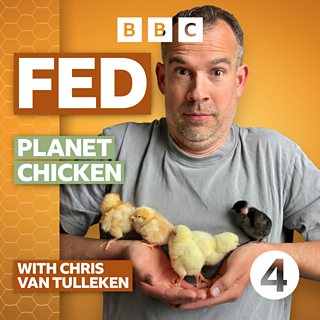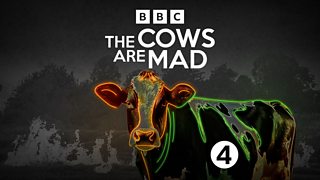How did fried chicken become a fast food favourite?
Ever found yourself walking down your local high street and coaxed into one of the many chicken shops by that mouth-watering aroma? Have you ever stopped to consider whether it’s the chicken itself that’s tempting you inside – or something else entirely?
In this episode of Fed with Chris van Tulleken, Chris hears how this versatile meat came to be the dominant fast food protein. He also investigates why fried chicken became so popular, and where this finger-licking favourite originated.
Here are some of the questions the episode explores…
What did the original fast food look like?
The origins of fast food can be traced back, unsurprisingly, to America. In the 1920s, the food industry was inspired by Henry Ford’s moving assembly line and began mass-producing food. Burgers were the most popular choice, with beef patties first being slung by White Castle in the 1920s, then later McDonald’s and Burger King in the 40s and 50s respectively. The economy of scale and broad distribution of high volume, quick-cook burgers made them indomitable.
But chicken was nowhere to be seen, despite America having a surplus. The broiler industry surged during World War Two when the U.S. government pumped money into feeding troops with chickens. But food historian Emelyn Rude explains that “people found [chicken] really boring. You could only go to the grocery store and buy whole chickens and half chickens.”
So, where did chicken nuggets come from?
With all this excess chicken meat, one food scientist saw a solution. Cornell University’s Robert C. Baker had grown up on a fruit farm during the depression and knew all too well the dangers of food scarcity. Determined not to let the meat go to waste, Baker put time into repurposing chicken meat into processed items such as burgers, sausages and, yes, the original chicken nuggets (which he called “chicken crispies”). His inventions revolutionised an industry, but arguably began a move towards the mass-produced processed foods that are so omnipresent today.

How did processed chicken get so immensely popular?
Baker’s research hit at just the right time: the Americans were facing a crisis over veteran welfare. Many returning from war were dying from cardiovascular disease at an unusually young age. Emelyn explains that the U.S. government “discovered that a lot of it had to do with either one of two substances… red meat or sugar”. This ignited the race to find a suitable alternative to red meat.
The U.S. government began to promote white meats as a healthier option. Marketing campaigns were rolled out and chicken became a major player in the fast food landscape. The deal was sealed when McDonald’s released McNuggets. Now Americans gobble up 2.3 billion servings of nuggets every year.
Does mass-produced chicken still taste the same?
As farming techniques have adapted to accommodate the increased demand for chicken, flavour has been left behind. Food journalist Mark Schatzker explains that “we’ve gotten very good at producing a lot of food at a low price… but there is a trade-off between quantity and quality”. With chickens being grown faster and killed earlier, they’re less flavourful than their 1940s ancestors. Their relatively homogenous diet of grains and soy also impacts flavour, as chickens miss out on the bugs, grass and other miscellaneous foods that enrich their meat.
Does it matter if chicken doesn’t taste as good anymore?
Although we might be tempted to take our lumps with less flavourful chicken, it’s not that simple. This lack of flavour means many people turn to flavour substitutes. Salt, ketchup, oil, BBQ sauce - they all make for poor dietary choices.
Even without these additions, much modern chicken still has its flavour enhanced in non-apparent ways. In the 1960s, the flavour industry exploded as scientists found artificial alternatives to once natural tastes. These flavours were then pumped back into chicken to trick the minds of consumers. Some modern chickens are pumped with water, salt, dextrin and chicken flavouring akin to a stock cube to boost the chicken’s taste. It seems the bottom line is money: as long as chickens are cheap, some consumers don’t care.

How does flavour impact food cravings?
Flavour is essentially our brain’s way of predicting what nutrients are coming into the body. Normally this is fantastic: our brains sense that we’ve eaten the right amount of fats, sugars and salts, and our diet is regulated appropriately.
But artificial flavours mess with this balance. When our brain detects artificial flavours without any nutrients, it gets confused. This is known as a reward prediction error, and it causes a surprising response: our brain craves more of the same food to get the nutrients it expected. In other words, it wants more of that same, nutrient-deficient chicken.
Is fried chicken more than just a ‘fast food trap’?
Not all fried chicken is fast food - it’s also a cultural staple. Fried chicken of certain forms is important to many people’s upbringings. Food writer Melissa Thompson explains that “fried chicken was a part of the repertoire” of home-cooked meals, having grown up in Dorset with a Jamaican father. She has since mastered different forms of fried chicken from various cultural backgrounds, such as the soy sauce-marinated Japanese karaage.
Despite her love of fried chicken, Melissa is all too aware of the problematic racial implications of the dish. Fried chicken is most commonly associated with the American south, having sprung up as a variation on West African fricassee in black communities. As a staple in soul food menus, fried chicken has become parodically associated with black culture. As Melissa points out, “it’s very telling that the most famous iteration of fried chicken is fronted by a white, moustachioed caricature of a man who claimed to have invented this recipe.”
How does our food environment affect what we eat?
Food justice campaigner, Christina Adane, explains that her journey to school helped her notice the big difference between the food environment around her home in south London, which consisted of “chicken shops, takeaways” and that of wealthier Westminster, where you were more likely to spot “a Pret.”
She points out that fast food advertising also targets people on lower incomes. “Sports is such a great example of this. If you go to watch a game of tennis, you’re getting sponsors from Rolex and Evian. If you go to watch a football game, they’re sponsored by McDonald’s and chocolate bars and Coca Cola.”
Christina says people in poorer areas are constantly bombarded with poor dietary choices and stresses that “because junk food culture is so normalised…there’s no way we can be independent from the exploitative food system.”
When it comes to the idea of making healthy food choices, Christina argues that these aren’t choices at all. “We try not to talk about choice and instead talk about the lack of option. You can’t choose between fried chicken and fried chicken, between burger and burger. It’s the same option.”
Listen to the full series of Fed with Chris van Tulleken - Planet Chicken here
More from Â鶹Éç Radio 4
-
![]()
The Cows Are Mad
Science has still failed to definitively answer two major questions about mad cow disease - where did it come from and how did humans get it?
-
![]()
Sliced Bread
Greg Foot investigates the so-called wonder products making bold claims. Are they the best thing since sliced bread, or marketing BS?
-
![]()
Best Medicine
Kiri Pritchard-McLean is joined by funny and fascinating comedians, doctors, scientists and historians to celebrate medicine's inspiring past, present and future.
-
![]()
The Today Podcast
Amol and Nick's take on the biggest stories of the week. With insights from behind the scenes at the UK's most influential radio news programme.





